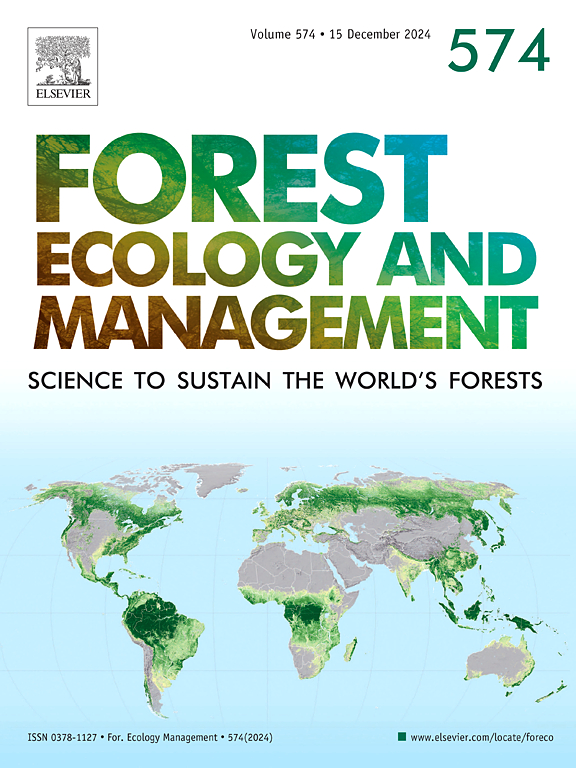Variations in soil organic carbon pool structure in the humus layer influenced by soil nutrient stoichiometry under nitrogen addition treatments: Evidence from a temperate Korean pine plantation in northeast China
IF 3.7
2区 农林科学
Q1 FORESTRY
引用次数: 0
Abstract
Atmospheric nitrogen (N) deposition critically alters the dynamics of forest soil organic carbon (SOC) pools and induces shifts in carbon (C)-N-phosphorus (P) stoichiometric balances. However, comprehensive analyses linking forest SOC pool structure with detailed soil C-N-P stoichiometry remain limited. In this study, varying concentrations of ammonium nitrate (0, 20, 40, and 80 kg N ha⁻¹ yr⁻¹) were applied on northeastern temperate Korean pine plantation in China over nine consecutive years, then the humus layer and topsoil layer (0–5 cm) were collected. The results demonstrated that exogenous N fertilizer application promoted the transformation from readily oxidizable organic C (ROC) to non-readily oxidizable organic C (NROC), enhanced SOC pool stability, and influenced the carbon pool management index (CPMI). Additionally, significant alterations in the C-N-P stoichiometric relationships were observed within both soil horizons. Random forest and structural equation modeling indicated that nutrient stoichiometry, such as the N:P ratio, C:N imbalance, and N:P imbalance, were the primary factors influencing changes in the SOC pool profiles within the humus layer. In contrast, SOC pool profiles in the topsoil layer were strongly associated with pH, total N, and soil cellulase activity. This study contributes to the optimization of C cycle models for terrestrial ecosystems in the context of the continuing increase in global N deposition.
求助全文
约1分钟内获得全文
求助全文
来源期刊

Forest Ecology and Management
农林科学-林学
CiteScore
7.50
自引率
10.80%
发文量
665
审稿时长
39 days
期刊介绍:
Forest Ecology and Management publishes scientific articles linking forest ecology with forest management, focusing on the application of biological, ecological and social knowledge to the management and conservation of plantations and natural forests. The scope of the journal includes all forest ecosystems of the world.
A peer-review process ensures the quality and international interest of the manuscripts accepted for publication. The journal encourages communication between scientists in disparate fields who share a common interest in ecology and forest management, bridging the gap between research workers and forest managers.
We encourage submission of papers that will have the strongest interest and value to the Journal''s international readership. Some key features of papers with strong interest include:
1. Clear connections between the ecology and management of forests;
2. Novel ideas or approaches to important challenges in forest ecology and management;
3. Studies that address a population of interest beyond the scale of single research sites, Three key points in the design of forest experiments, Forest Ecology and Management 255 (2008) 2022-2023);
4. Review Articles on timely, important topics. Authors are welcome to contact one of the editors to discuss the suitability of a potential review manuscript.
The Journal encourages proposals for special issues examining important areas of forest ecology and management. Potential guest editors should contact any of the Editors to begin discussions about topics, potential papers, and other details.
 求助内容:
求助内容: 应助结果提醒方式:
应助结果提醒方式:


